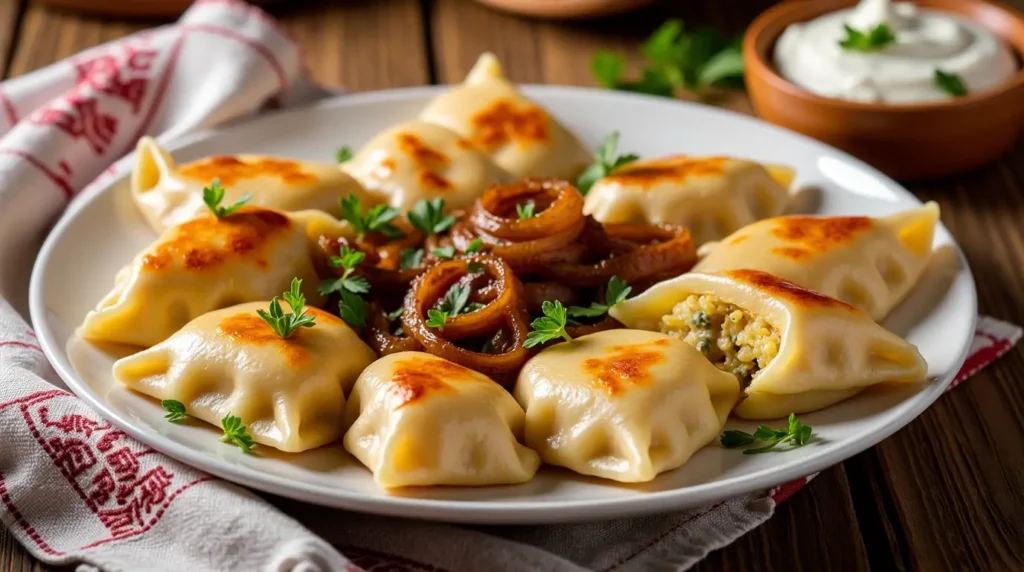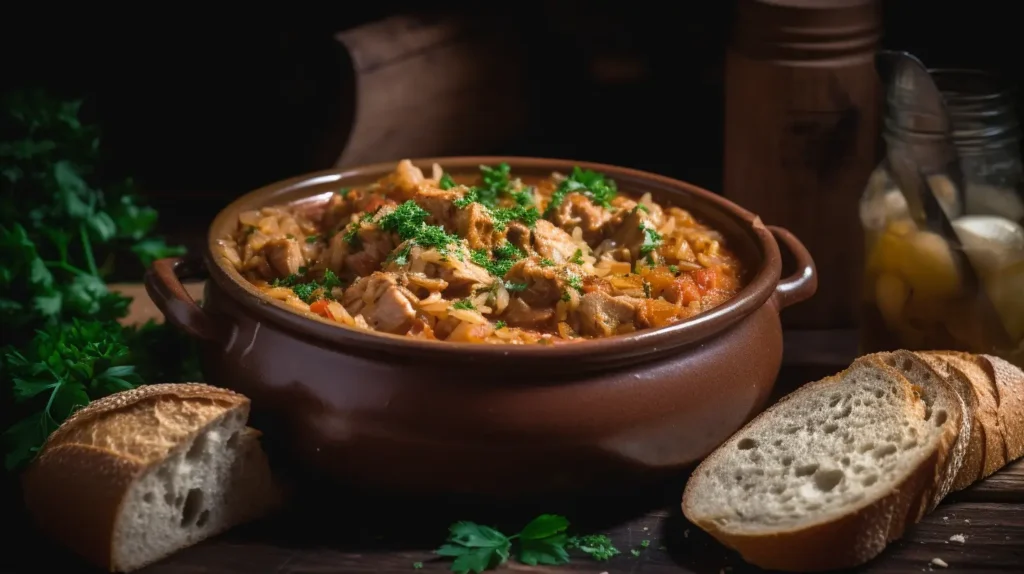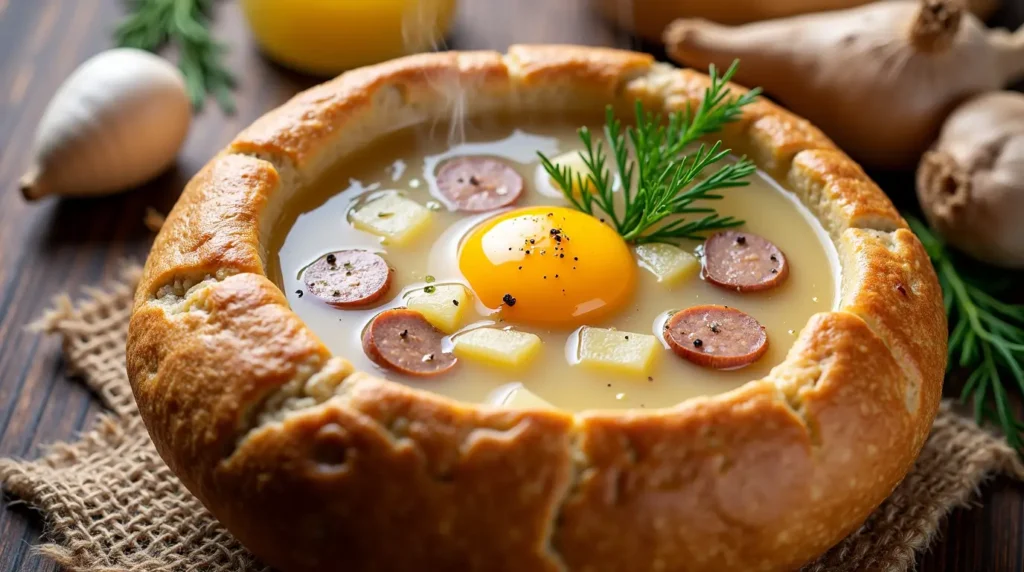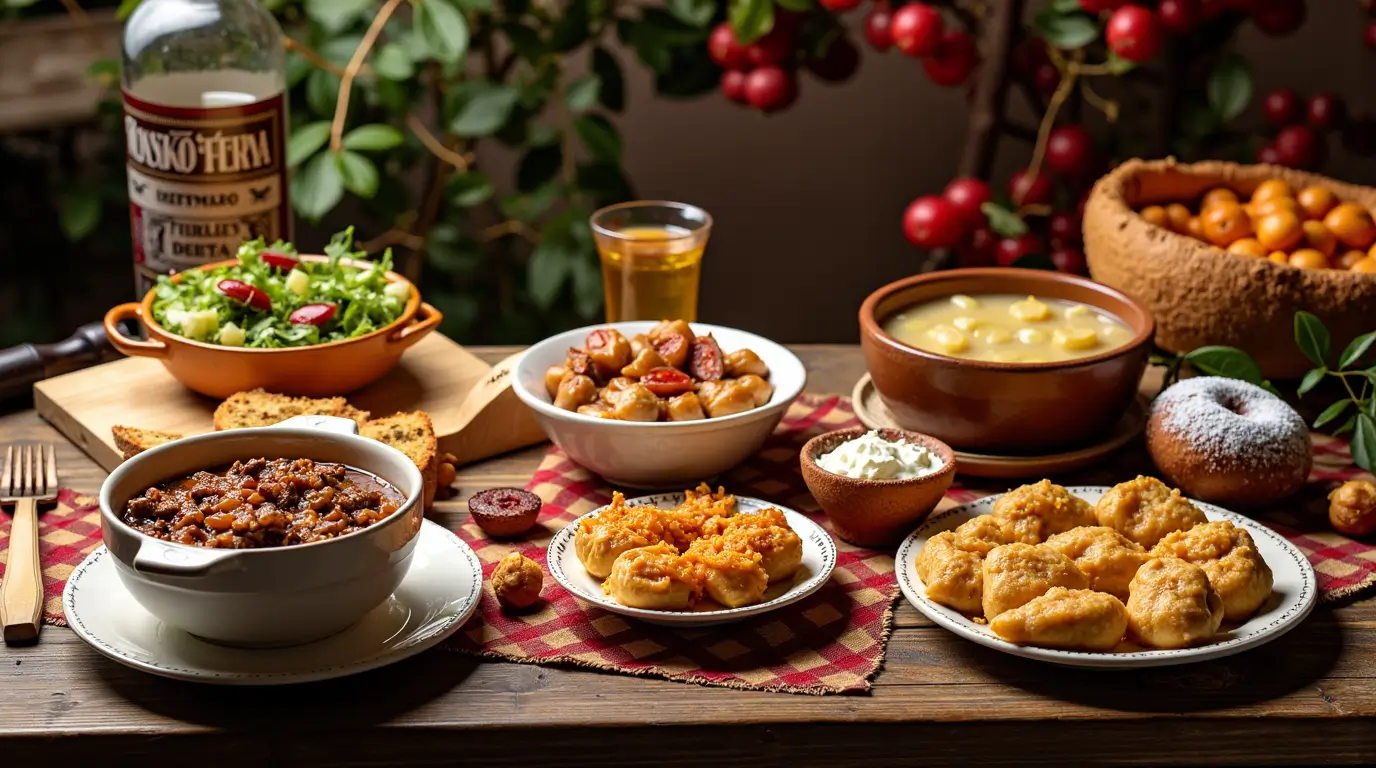Table of Contents
Table of Contents
Introduction
Poland’s culinary heritage is one of the most fascinating in Europe, blending Old World traditions with modern evolutions in a way that continues to delight both locals and visitors. From hearty soups and savory pierogi to sweet pastries and refreshing seasonal beverages, Polish cuisine features a bounty of flavors that reflect the country’s diverse history and geography. Whether you are tasting a farmhouse loaf of rye bread from a remote village or sampling high-end gastronomic fusion dishes in Warsaw, there is no shortage of discoveries to be made in this delicious realm.
At its core, Polish cuisine is about combining fresh, high-quality ingredients with time-honored cooking methods, resulting in comforting dishes that warm the soul. Soups such as żurek or barszcz demonstrate a knack for resourcefulness, while dumplings, potatoes, and preserved vegetables underscore how Poles have adapted to a climate that can be harsh, especially during the long winters. Over centuries, neighbors’ influences and international trade have left notable marks on local foodways. Moreover, deep-rooted cultural traditions mean that certain dishes are prepared in almost ceremonial ways and served primarily during holidays or family celebrations.
In the sections that follow, we will delve into the many layers that form the mosaic of Polish cuisine. We will start with a look at the historical, geographical, and cultural context that shaped these recipes, then explore the quintessential ingredients and products you simply have to try. We will discuss must-try traditional dishes, touching on the fundamentals of their preparation, before uncovering the defining characteristics that make Polish cuisine unique. We will also share tips, anecdotes, and key details on table customs and festive occasions, followed by a glimpse of how younger generations of chefs and food enthusiasts are adding new twists to old classics. Finally, we will wrap up with a brief conclusion and a call to action for everyone curious to explore this dynamic and rewarding gastronomic world.
Culinary Context and History
Early Foundations and Influences
The foundations of Polish cuisine were laid centuries ago, taking root in the Middle Ages when the Polish state began to take shape, influenced primarily by Slavic traditions. During this era, food was simple and designed to fuel the hard work of farming communities, focusing on grains like rye, wheat, millet, and barley, as well as root vegetables like turnips, carrots, and beets. Meat was a luxury for many, although game hunting was common among nobility.
As Poland’s position in Central Europe grew stronger, various peoples and cultures arrived or passed through, each leaving traces in local cooking. From the 14th century onward, ties with Lithuania, Bohemia, and the broader Holy Roman Empire introduced new flavors and food preservation methods, including smoked meats and pickled vegetables. Through these exchanges, the notion of a robust soup culture took shape, blending indigenous ingredients with foreign spices and techniques that gave meals a distinctive depth.
The Golden Age: 16th and 17th Centuries
Poland’s “Golden Age,” particularly under the reigns of kings like Sigismund I the Old and Sigismund II Augustus, was pivotal in shaping modern Polish cuisine. The country’s borders expanded, unifying with the Grand Duchy of Lithuania, and trade networks extended as far as the Ottoman Empire and the Middle East. Spices such as nutmeg, cinnamon, and pepper became more accessible, changing the flavor profile of many dishes. Wealthy noblemen indulged in lavish feasts, marked by roasted meats, layered pies, stuffed pastries, and desserts flavored with exotic ingredients.
It was also during this time that Italy’s influence, brought to Poland via Queen Bona Sforza, introduced new vegetables, known in local lore as “Italian vegetables.” These included cauliflower, broccoli, and notably the tomato—although its acceptance took centuries to fully integrate. The queen’s chefs also inspired advanced baking techniques, resulting in refined pastries and cakes that would become staples in Polish patisseries.
Partitions, Cultural Exchanges, and 19th Century
Starting in the late 18th century, Poland was partitioned among neighboring powers: Prussia, Russia, and the Habsburg Empire. These dramatic geopolitical changes further enriched Polish cuisine with new regional tastes. In areas annexed by Austria (Galicia), for example, Viennese-style pastries and coffee culture blossomed, while Russian-controlled territories absorbed Russian specialties like bliny and pelmeni. A vibrant Jewish community played a major role in shaping local gastronomy, particularly in the realm of pickling and the preparation of gefilte fish, cholent, and other dishes that later became assimilated into broader Polish fare.
Despite these divisions, the essence of Polish cuisine remained alive through family gatherings and religious festivals, preserving a sense of shared identity. Recipes were passed down through generations, connecting Poles to a collective culinary legacy that transcended political barriers.
Post-War Period and Contemporary Developments
After World War II, food shortages and communist-era central planning policies affected the availability of certain ingredients, leading to widespread reliance on staples like potatoes, grains, and seasonal vegetables. Restaurants were often state-controlled and offered a limited menu, focusing on traditional, filling meals that could be prepared from whatever ingredients were on hand.
With Poland’s transition to democracy in 1989 and subsequent integration into the European Union, Polish cuisine underwent a renaissance. Access to global ingredients, improved trade relations, and broader gastronomic influences spurred a new wave of creativity. Chefs began combining traditional recipes with modern cooking techniques, giving birth to a contemporary Polish gastronomy that values seasonality, farm-to-table sourcing, and nuanced flavors. Today, Polish cuisine is at a thrilling crossroads where old and new intersect, offering a unique culinary landscape ready for exploration.
Regional Differences
While there is a unifying thread across Poland’s kitchen traditions, each region has distinctive dishes shaped by climate, proximity to certain agricultural areas, and local histories.
- Northern Poland (Pomerania and Masuria): Known for its abundant lakes and access to the Baltic Sea, this region features seafood such as herring, cod, and eel. Smoked fish is especially popular, and the local forests yield wild mushrooms and berries that are often preserved for winter use.
- Eastern Poland (Podlachia and Lublin areas): Influenced by Lithuanian, Belarusian, and Ukrainian cultures, dishes here often revolve around beetroot, potatoes, and grains. The soups are notably hearty, and dumplings may be stuffed with local curd cheese or potatoes.
- Southern Poland (Silesia, Podhale, and Małopolska): The mountainous south is rich in sheep’s cheese (oscypek), potato-based dishes, and hearty stews to fend off the cold. Silesian cuisine is famous for its distinctive dumplings (kluski śląskie) and thick gravies.
- Western Poland (Wielkopolska and Lubusz): This region has historically felt German influences. Hence, dishes like schabowy (breaded pork cutlet) might be prepared with a local twist, and the area’s farmland provides ample wheat, sugar beets, and potatoes.
By understanding these regional nuances, you can appreciate the broad spectrum of Polish cuisine and the myriad ways it reflects the land, climate, and cultural tapestry of the country.
Key Ingredients and Local Products
Emblematic Foods
A major hallmark of Polish cuisine is its reliance on simple, high-quality ingredients rooted in the local environment. These include:
- Grains: Rye and wheat remain integral. Rye bread (chleb żytni) is central to many meals, prized for its sourdough tang and sturdy texture. Wheat flour is, of course, essential for pierogi dough and pastries.
- Potatoes: Introduced in the 17th century, potatoes are a staple side dish, found in everything from dumplings to pancakes (placki ziemniaczane) and as a base for soups.
- Cabbage and Sauerkraut: Fresh white cabbage and fermented sauerkraut feature prominently, with bigos (a sauerkraut-and-meat stew) being a national treasure.
- Beets: Beets are the foundation of barszcz (borscht) and play a vital role in regional soups and salads. Their earthy sweetness pairs well with tangy fermented ingredients.
- Mushrooms: The tradition of mushroom foraging (grzybobranie) is embedded in Polish culture. Varieties like porcini (borowik) and chanterelle (kurka) are highly prized, often appearing in stews, sauces, or as dumpling fillings.
- Pickles and Ferments: From pickled cucumbers (ogórki kiszone) to fermented rye flour used as a soup base, Poles are experts at preserving produce, ensuring year-round availability of vitamins.
- Meats: Pork, chicken, beef, and game (venison, wild boar) are staples. Smoked sausages (kiełbasa) are iconic, each region boasting its own specialty—Kiełbasa Krakowska, Kiełbasa Podhalańska, and so forth.
- Dairy and Cheese: Dairy is abundant, with fresh farmer’s cheese (twaróg) starring in both sweet and savory dishes. In the mountains, smoked sheep cheese (oscypek) is a beloved delicacy.
- Herbs and Spices: While early Polish tables heavily favored black pepper, marjoram, bay leaf, and dill have become the stars of many traditional dishes. Parsley root and celery root also enrich soup stocks.
Seasonality
Because Poland experiences four distinct seasons, recipes and ingredient availability shift throughout the year. In spring, fresh vegetables like young cabbage, radishes, and new potatoes invigorate the menu. Summer is the season for sweet berries, cherries, cucumbers, and tomatoes, which are often turned into refreshing cold soups (chłodnik) or condiments. Autumn harvest brings an abundance of root vegetables, mushrooms, and apples. Winter cooking focuses on preserved items like sauerkraut, pickled cucumbers, smoked meats, and hearty grains, ensuring that even in the coldest months, Polish cuisine remains robust and satisfying.
Tips on Purchasing Ingredients
For those looking to recreate Polish cuisine at home, seeking out authentic ingredients can make all the difference:
- Local Markets: In cities worldwide with sizable Polish communities, you can often find specialized grocery stores selling pickled products, Polish rye bread, and traditional sausages. Farmer’s markets might also stock seasonal vegetables reminiscent of those used in Poland.
- Online Specialty Retailers: Various online platforms sell Polish products, from flour mixes specific to pierogi dough to imported cheeses, meats, and condiments.
- Substitutions: If you cannot find the exact variety of sausage or cheese, focus on selecting a high-quality local equivalent. The soul of Polish cuisine is about resourcefulness and adaptation, so do not be afraid to swap an ingredient if needed.
Must-Try Traditional Dishes
Pierogi

Arguably the most recognizable symbol of Polish cuisine, pierogi are small dumplings with a chewy, pasta-like dough, boiled or sometimes fried after boiling. Fillings vary widely and can be sweet or savory. The most classic types are:
- Pierogi ruskie (Ruthenian pierogi): Stuffed with a mixture of mashed potatoes, twaróg (fresh farmer’s cheese), and sautéed onions.
- Pierogi z kapustą i grzybami (with cabbage and mushrooms): A hearty, earthy filling often served during Christmas Eve dinner.
- Pierogi z mięsem (with meat): Typically using leftover cooked beef or pork, finely ground and seasoned.
- Pierogi z owocami (with fruit): Often strawberries or blueberries, topped with sour cream and a sprinkle of sugar.
Simplified Pierogi Recipe (makes about 30 dumplings):
- Dough: Mix 3 cups of all-purpose flour, a pinch of salt, and about 1 cup of warm water. Knead until smooth, cover with a damp cloth, and let rest 20 minutes.
- Filling: For a potato-cheese filling, boil 2 large potatoes, mash them with 1 cup of farmer’s cheese, and fry some chopped onions in butter. Combine and season with salt and pepper.
- Assembly: Roll out the dough on a floured surface to about 1/8-inch thickness. Cut circles with a cookie cutter or drinking glass, place a teaspoon of filling in the center, fold in half, and pinch edges tightly.
- Cooking: Drop pierogi into boiling salted water, and when they float to the surface, let them cook for an additional minute. Serve with melted butter and sautéed onions or sour cream.
Bigos

Known as the “hunter’s stew,” bigos is a quintessential one-pot dish featuring sauerkraut, fresh cabbage, and chunks of various meats (often pork, kiełbasa sausage, and game). Long, slow simmering allows flavors to meld, with many cooks claiming it tastes better after reheating the next day.
Regional Variations
- Silesian version: Might include more sausage and be slightly thicker.
- Kaszubski (Kashubian) version: May incorporate more fish or regional smoked meats.
- Highland twist: In mountainous areas, a bit of oscypek cheese might be added for a smoky dimension.
Żurek

A hearty sour rye soup, żurek is flavored with a fermented rye starter called zakwas. It often contains white sausage, hard-boiled eggs, and diced potatoes. This soup is particularly popular during Easter festivities and is sometimes served in an edible bread bowl.
Other Notable Dishes
- Gołąbki (Stuffed Cabbage Rolls): Cabbage leaves wrapped around a filling of rice, onion, and ground pork or beef, then braised in a tomato or mushroom sauce.
- Kotlet Schabowy (Breaded Pork Cutlet): Similar to Viennese schnitzel, this cutlet is pounded thin, breaded, and fried, served with potatoes and a side of braised cabbage.
- Rosół (Chicken Broth): A clear chicken soup with vermicelli noodles or homemade kluski. This dish is a staple of Sunday lunch.
- Pączki (Polish Donuts): Yeast-based donuts filled with rose hip jam or plum jam, dusted with powdered sugar. Eaten year-round but especially on Fat Thursday.
Defining Characteristics of Polish Cuisine
When one thinks of Polish cuisine, a few defining traits stand out:
- Hearty and Comforting: Many dishes are designed to provide warmth and sustenance, reflecting Poland’s cold winters. Thick soups, stews, and dumplings are cornerstones of daily meals.
- Sour and Fermented Notes: From sauerkraut to pickled cucumbers and the sour rye base in żurek, these tangy accents balance the richness of meat and potato-based dishes.
- Subtle Spicing: While black pepper, bay leaf, and marjoram are present, Polish cuisine is not generally “spicy” in the chili sense. The mild seasoning allows the natural flavors of fresh produce and meats to shine.
- Sweet-Savory Harmony: It is not unusual to find sweet components (fruit fillings, sweet cheese) side by side with savory ingredients in a single meal. This interplay of flavors is a hallmark of the country’s dining experiences.
- Fresh, Seasonal Ingredients: Even with the tradition of preserving and pickling, Poles have long taken advantage of the seasonal bounty, which lends a fresh and varying palate throughout the year.
For food enthusiasts in search of something beyond the typical Mediterranean or Asian fare, Polish cuisine offers an intriguing combination of mild yet complex flavors, heartiness, and a rich cultural background. The variety of soups, dumplings, ferments, and pastries ensures that there is always a new flavor or texture to discover. Additionally, those who appreciate the art of baking and preserving will find Polish cuisine especially appealing, as it provides a wide canvas for experimenting with fermentation, yeasted doughs, and dairy-based confections.
Tips and Highlights to Encourage People to Try This Cuisine
Polish cuisine is more than just a collection of dishes—it embodies a spirit of warmth and hospitality. Polish culture traditionally prizes feeding guests well, so trying local specialties is akin to receiving a heartfelt welcome. Here are a few highlights and anecdotes to entice you:
- Hospitality at Home: In many Polish families, visitors are greeted with tea, coffee, or even a shot of homemade nalewka (fruit liqueur) and a slice of cake. This custom underscores how central food is to social life.
- Historical Depth: Tasting a bowl of bigos links you directly to centuries of culinary history, from royal courts to hunters in the forests. Many recipes carry stories of resilience and adaptation, reflecting the country’s turbulent past.
- Festive Delights: If you travel to Poland during holidays like Easter or Christmas, you will see how essential communal feasting is to cultural identity. A single meal might feature over a dozen homemade specialties, each telling its own story.
- A Hidden Gem: Although overshadowed in global media by more famous European cuisines, Polish cuisine is slowly gaining recognition for its artisanal products and innovative chefs, making now a perfect time to discover it.
Table Rituals and Customs
Typical Meals and Structure
- Breakfast (Śniadanie): Often hearty and can include eggs, sliced meats, cheese, tomatoes, cucumbers, and bread. Many enjoy open-faced sandwiches (kanapki).
- Second Breakfast/Brunch (Drugie Śniadanie): Some workplaces or schools have a mid-morning snack, often involving a small sandwich or fruit.
- Lunch (Obiad): Traditionally the main meal, served in early afternoon. A typical obiad includes soup, followed by a main course of meat or fish with sides of potatoes and vegetables.
- Afternoon Tea or Coffee (Podwieczorek): In some households, this might be a time for a slice of cake or a small pastry.
- Dinner (Kolacja): Lighter than lunch, though modern trends vary. Sometimes dinner includes cold cuts, salads, or leftovers from lunch.
Etiquette and Traditions
- Seating and Formalities: Guests are generally seated first, and there is a custom of waiting until everyone is served before starting to eat.
- Toasts: Vodka toasts are common at celebratory meals. The first toast is typically offered by the host, who says “Na zdrowie!” (To your health!). Make eye contact when clinking glasses.
- Religious Influence: Catholic traditions remain strong, so on Christmas Eve (Wigilia), meat is absent from the table, replaced by fish and vegetarian dishes. Easter brings a focus on eggs, white sausage, and cakes like babka and mazurek.
Holidays and Celebrations
- Christmas Eve (Wigilia): This meal begins when the first star appears in the sky. Family members share opłatek (a thin wafer) and exchange well wishes before the feast, which includes carp, barszcz, pierogi, and other meatless dishes.
- Easter (Wielkanoc): Baskets of food (eggs, sausages, salt, bread) are taken to church for blessing on Holy Saturday, then consumed on Easter Sunday. A sour rye soup (żurek) with white sausage is traditionally served, and desserts include mazurek and sernik (cheesecake).
- Name Day (Imieniny): For many Poles, name days are as significant as birthdays, often celebrated with cakes, sweets, and sometimes a big meal with friends and family.
These customs highlight how Polish cuisine is interwoven with religious observances and familial traditions, reinforcing bonds through shared experiences around the dining table.
Modern Trends and Culinary Fusions
Fusion and International Influences
In recent decades, Poland’s global connections have accelerated the blending of foreign elements into Polish cuisine. Chefs experiment by introducing Asian spices, Mediterranean herbs, or South American produce into traditional recipes. For instance, you might find pierogi stuffed with kimchi or bigos spiced with chili peppers, reflecting the broader movement of fusion cuisine.
Some restaurants in major cities like Warsaw, Kraków, and Gdańsk feature menus that pair local produce (like oscypek cheese) with international sauces or condiments, creating dishes that respect tradition while pushing flavor boundaries. This phenomenon resonates with younger generations seeking novelty while maintaining a connection to their heritage.
New Consumption Trends
- Vegetarianism and Veganism: While classic Polish cuisine is often meat-centric, a growing interest in plant-based diets has led to creative adaptations. Vegan bigos, mushroom-based “pâtés,” and jackfruit “pork cutlets” are beginning to appear in health-focused restaurants.
- Farm-to-Table and Organic: Responding to global calls for sustainable and ethical eating, many Polish chefs now prioritize locally sourced, organic ingredients. Farmers’ markets flourish in towns and cities, bringing fresh produce, artisanal cheeses, and home-baked breads directly to consumers.
- Slow Food Movement: Poland has embraced the international Slow Food initiative, highlighting traditional products like oscypek cheese, certain heirloom apple varieties, and local honey. These prized items are protected and celebrated as cornerstones of authentic Polish cuisine.
Young Chefs and Restaurateurs
A new generation of Polish culinary talent is breathing fresh life into the restaurant scene. These chefs often train abroad and return home with innovative approaches to plating, technique, and flavor profiles, all the while remaining respectful of their culinary roots. They might deconstruct a classic soup into a modern foam or reinterpret pierogi dough to include unusual herbs or flours. In so doing, they ensure that Polish cuisine continues to evolve, seamlessly blending history with modern gastronomic artistry.
Conclusion and Call to Action
Throughout this exploration, we have uncovered the layers that make Polish cuisine a remarkable tapestry of flavors, traditions, and innovations. From its medieval foundations, shaped by trade and European exchanges, to the sophisticated reinterpretations of today’s top chefs, Polish food culture reflects both adaptability and loyalty to ancestral roots. It is a cuisine characterized by hearty dishes, subtle yet distinctive seasonings, and a flair for preserving the essence of every season. The regional variations—whether you are by the Baltic Sea, among the lakes of Masuria, in the mountains of Podhale, or the fields of Wielkopolska—demonstrate just how diverse and colorful the culinary landscape truly is.
We have journeyed through the key ingredients and local products that form the backbone of Polish cuisine, from smoked sausages to fermented cabbage and pickled cucumbers, each reflecting Poland’s resourcefulness in managing its climate and natural resources. We discovered must-try dishes like pierogi, bigos, żurek, and more, with their rich histories and comforting flavors. We saw how each region and holiday has its own culinary customs, connecting families and communities through shared rituals. Moreover, we observed the exciting evolution under way, with modern chefs incorporating global influences, embracing sustainable practices, and innovating on classic recipes.
Now that you have a clearer vision of Polish cuisine, we encourage you to explore it firsthand. Seek out local Polish markets or specialty stores in your area, experiment with making pierogi at home, or plan a trip to Poland to experience a broad spectrum of tastes—from a traditional family-run inn in the countryside to a cutting-edge gastronomic restaurant in a bustling city. Feel free to share your adventures, your own adaptations of these recipes, or any questions you have about delving deeper into the world of Polish cuisine.
We would love to hear your stories about trying these dishes for the first time or perhaps a cherished family recipe passed down through generations. Has something sparked your interest in a particular region’s specialties, or do you have tips on combining flavors in a modern fusion style? Please share in the comments or on social media; your insights help keep these traditions alive and evolving.
Finally, stay tuned for our future article, where we will dive into the vibrant world of Polish breads and pastries—exploring everything from rye sourdough loaves and sweet challah-like chałka to the intricacies of paczki-making. There is much more to discover in the sphere of Polish cuisine, and we cannot wait to take you on another delectable journey.

